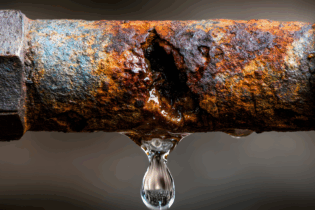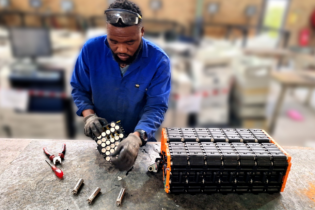As a highly water stressed country, South Africa cannot use its bulk water supply to manufacture green hydrogen. The good news is that the cost of desalination of saline or non-potable water makes up a near-negligible fraction (1%) of the hydrogen production cost.
“To make green hydrogen, one needs an electrolyser, renewable energy and water. It takes 9 kg of water to make 1 kg of hydrogen. However, due to contaminants in water, we estimate that between 10 kg and 12 kg of water will be needed for every 1 kg of hydrogen. If solar energy is used, even more water will be needed to clean the photo voltaic panels, so approximately 15 kg of water will be needed for every 1 kg of hydrogen,” explains Thomas Roos, senior research engineer, Council for Scientific and Industrial Research (CSIR). But for hydrogen to qualify as sustainable, the water source must be sustainable. This means that using water for fuel production must not negatively affect communities, agriculture or the environment. This is a particular concern under the German National Hydrogen Strategy. Germany will potentially be one of South Africa’s biggest customers for green hydrogen exports, and their strategy states that “the sustainable supply of water in arid regions of export countries must not be impaired by the production of hydrogen”. Therefore, as a highly water stressed country, with severe water shortages expected in Gauteng, Mpumalanga, KwaZulu-Natal, and the Western Cape, the use of potable water for hydrogen production is not sustainable. An unexpected benefit of green hydrogen “However, I want to emphasize that the hydrogen economy will not negatively impact water security or other water-heavy industries. In fact, it has the potential to assist with South Africa’s water problems,” states Roos. Desalination is an expensive water source for most industries – except green hydrogen. This is because it costs 50 KWh of energy to make 1 KWh of hydrogen, but it only takes 3 KWh to make 1000 kg of desalinated water. “The Japanese cost targets for hydrogen are US$3/kg in 2025 and US$2/kg in 2050. Compared with these values, the desalination cost component has been calculated to vary between 0.005-0.020 US$/kg of hydrogen produced, which is less than 1% of the 2025 target price,” states Roos. From this, it may be seen that the hydrogen industry can contribute to water resilience rather than detractfrom it, as it is in a far better position to carry the costs of desalination than communities or agriculture, who by necessity must rely on other cheaper water abstraction sources and treatment processes. For these reasons, treated non-potable water is the preferred feedwater supply option for bulk hydrogen production in South Africa. “This means that it is entirely possible to make a policy where green hydrogen producers oversize their desalination plants as part of their license to operate. A desalination plant could then sell water to a water utility only at the electricity price,” says Roos.Traditionally, financing desalination for water security where there is intermittent water supply is difficult. This is because desalination is expensive and a water utility will source water at the lowest cost, meaning that desalination will always be a last option. There are (unless one lives in the Gulf) seldom guaranteed off-takers.
“This would be different with green hydrogen. When there are good rains and full dams, the desalination plant can run at limited capacity or it can run at full capacity and use the excess water to recharge aquifers,” maintains Roos. Desalination: inland and coastal production In order to produce bulk hydrogen competitively, transport economics dictate that road transport costs must be kept to a minimum. A distinction is therefore made between inland and coastal markets. For the production of hydrogen for export and coastal use, the feedwater should be desalinated seawater. Export hydrogen should be produced at or near the port of shipment. For the production of hydrogen for inland domestic use, the feedwater should be desalinated/treated water from heavily contaminated sources not treatable by municipal wastewater treatment plants (mine water, acid mine drainage and industrial wastewater). Municipal wastewater should only be used when these other sources are fully exhausted, as industry may need this water source in the future. “As discussed earlier, it is recommended that desalination plants supplying the electrolysis plants for bulk hydrogen production be oversized to be at least 300% the capacity required for the electrolysis plant alone. This can be done as part of their license to operate. The extra capital expenditure costs should be carried by the project and built into the hydrogen price (which, as demonstrated, will not be greatly affected),” explains Roos. For coastal hydrogen production (for export and coastal use), the proposed approach is that in times of good rains and full dams, the desalination plants operate at reduced capacity, supplying only the electrolyser plant. In times of drought, however, the desalination plants operate at full capacity. The local water utility then buys the excess water, paying only for the electricity component: the capital repayment costs are paid for by the hydrogen business. For inland hydrogen production, it is recommended that the oversized desalination plants permanently operate at full capacity. This supports the capacity of the state to treat contaminated water issuing from public sources such as acid mine drainage from abandoned mines without owners, as this burden normally falls to the fiscus. For operating industries that produce contaminated wastewater, such as mines and factories, it provides opportunities for partnerships with hydrogen businesses to treat their effluent water. According to Roos, the above approach will have two beneficial effects. “Firstly, it increases the water resilience and water treatment capacity of the municipalities and metros involved. Secondly, it makes it easier to secure buy-in from South African public sector stakeholders, as public water infrastructure is difficult to finance, and desalination infrastructure particularly so.” Under this approach, coastal water utilities in regions of hydrogen export production now only need to procure base-demand operating desalination plants to meet growth-related additional demand, for which the offtake can be known with greater certainty, making them easier to finance. Capacity to meet seasonally variable and drought-related additional demand is procured by the hydrogen export business.







